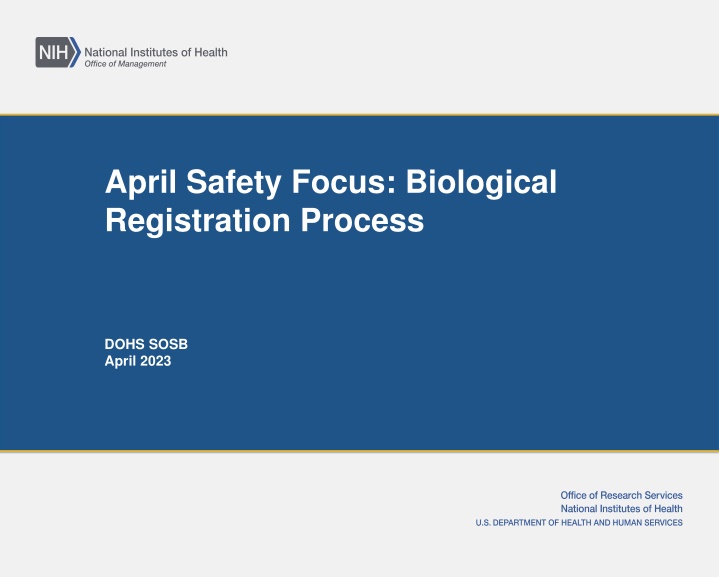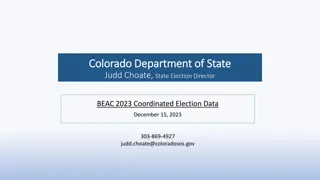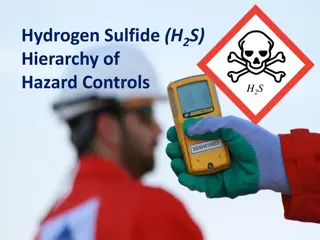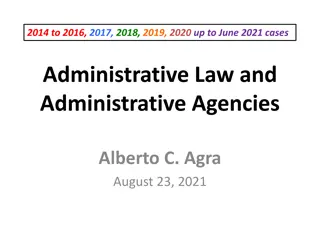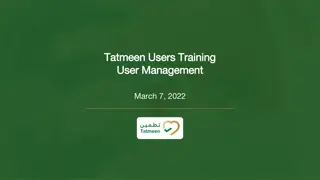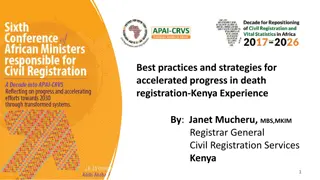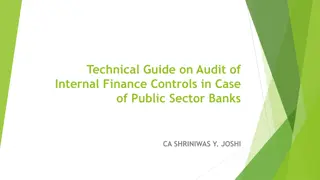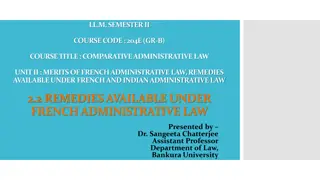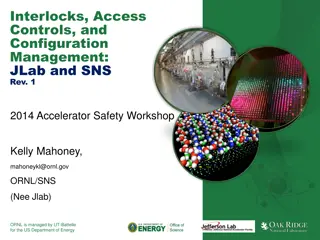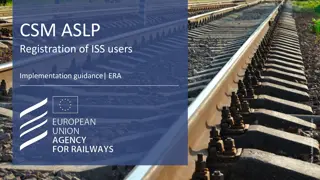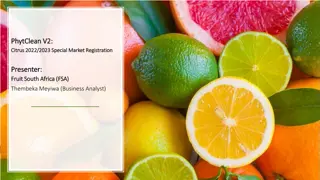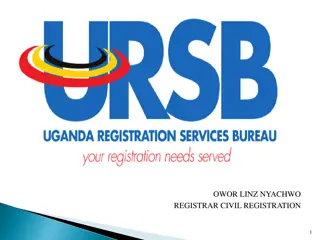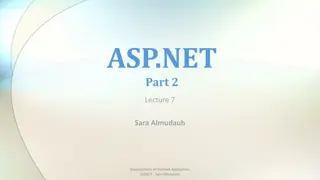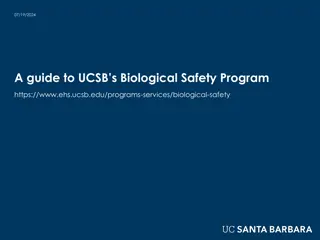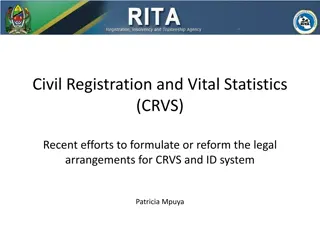Biological Registration Process and Administrative Controls for Safety Focus
Registering work involving biological materials, toxins, and recombinant DNA is essential for safety compliance. Principal Investigators must follow NIH guidelines and register with the Institutional Biosafety Committee. Contact NIH for additional instructions on working with toxins and Select Agent/Toxin registrations. Stay updated with IBC registration for personnel, location, and procedure changes. Documentation is key for proper safety protocols.
Download Presentation

Please find below an Image/Link to download the presentation.
The content on the website is provided AS IS for your information and personal use only. It may not be sold, licensed, or shared on other websites without obtaining consent from the author.If you encounter any issues during the download, it is possible that the publisher has removed the file from their server.
You are allowed to download the files provided on this website for personal or commercial use, subject to the condition that they are used lawfully. All files are the property of their respective owners.
The content on the website is provided AS IS for your information and personal use only. It may not be sold, licensed, or shared on other websites without obtaining consent from the author.
E N D
Presentation Transcript
April Safety Focus: Biological Registration Process DOHS SOSB April 2023
Administrative Controls ALL work with biological materials, toxins and recombinant DNA must be registered using PI Dashboard https://policymanual.nih.gov/3035 The NIH Biorisk Management Program ensures compliance NIH Guidelines for Research Involving Recombinant and Synthetic Nucleic Acids Information: https://osp.od.nih.gov/policies/biosafety-and- biosecurity-policy#tab2/ Download: https://osp.od.nih.gov/wp- content/uploads/NIH_Guidelines.pdf 2
Administrative Controls All Principal Investigators (PIs) must register the following work with the NIH Institutional Biosafety Committee (IBC) Creating, manipulating or using recombinant or synthetic nucleic acid molecules covered under the NIH Guidelines (incl. transfected/transduced cells of any type) Involving agents infectious to humans, animals, and/or plants Involving human and non-human primate blood, body fluids, tissues (primary and established) Other potentially infectious biological material
Work with Toxins and Select Toxins For Select Agent/Toxin Associated Registrations: Contact the NIH Biological Safety Officer (BSO), SOSB or the NIH Select Agent Program (SAP) to receive additional instructions for review by the IBC and Select Agent Program registration. NIH policy requires registration for any work with acute toxins (LD50 = 100 g/kg body weight) If a select toxin is possessed over the exempted amount, it must be registered with the Select Agent Program. NIH SAP: 301-496-2960 https://www.selectagents.gov/
Permissible Select Toxin Amounts Permissible Toxin Amounts, Federal Select Agent Program The following toxins are not regulated if the amount does not exceed, at any time, the amounts indicated in the table below; however, registration is still required for these toxins. HHS Toxins [42CFR73.3(d)(7)] Amount Abrin 1000 mg Botulinum neurotoxins 1 mg Short, paralytic alpha conotoxins 100 mg Diacetoxyscirpenol (DAS) 10,000 mg Ricin 1000 mg 500 mg Saxitoxin Staphylococcal Enterotoxins (Subtypes A, B, C, D, and E) 100 mg T-2 toxin 10,000 mg Tetrodotoxin 500 mg https://www.selectagents.gov/sat/permissible.htm
IBC Registration Updates Registration updates must occur when: There is a change in personnel There is a change in work location There is a change in procedures When an associated ASP is renewed And/or updated at least annually or when work is terminated Registration documents outline the handling requirements of the agent so that DOHS can properly respond to safety questions related to the agents and make sure proper engineering, administrative and PPE controls are in place. 6
Examples of Materials in ASPs that Require Registration/Amendment Directly administered plasmids Regardless of encoded gene(s) Directly administered human or NHP cells Including established cells (e.g. HeLa, HEK, Vero) RD and PRD will be required (e.g. stably transfected/transduced cells) Directly administered recombinant cells Transduced/transfected cells, to describe genetic modification process. Directly administered viral vectors E.g. lentiviral, retro-, adeno-, adeno-associated These are distinct and must be described separately Human, plant, or animal pathogens (e.g. E.coli)
Registration Amendments IBC registration amendment required during ASP process in these three cases: Initial application Renewal of the Registration Change in the procedure related to the registered material
ASP Process Review Full ACUC Review Does your ASP include the use of a registered material (pathogen, recombinant material, transgenic animals, etc.?) Pre-Review (recommended step for all ACUCs) Review comments back to the PI for edits Committee Review PI Submits ACUC Protocol No PI Edits Signoff Approval Vet/ Vet/Safety Review PI instructed to submit an IBC registration amendment or initial application, if applicable, as a stipulation/ comment. Member/ Safety Review Safety will provide stipulations to the PI including IBC approval language and instructions for adding to the ASP, if applicable. Yes Do you have an approved registration for the material? Yes No Amend your registration describing the animal work and upload a draft copy of the ASP when submitting the registration for IBC approval. Submit a new registration describing the use of the material in the ASP. Upload a draft copy of the ASP with the registration for IBC approval.
ASP Process Review DMR Does your ASP modification introduce new work with a material requiring registration (pathogen, recombinant material, transgenic animals, etc.)? Does your ASP modification make any changes in work related to a previously approved registration? Review PI Submits ACUC Modification Veterinary & Safety Review No No Signoff Approval comments back to the PI for edits Vet/Safety Review Committee members are notified of any protocols that will go through DMR to see if there are any requests for full committee review instead. PI instructed to submit an IBC registration amendment or initial application or, if completed, what language to add into the ASP in a stipulation/ comment. Yes Yes Submit a new registration describing your work and upload a draft copy of the ASP modification. Submit registration amendment describing the work and upload a draft copy of the ASP modification.
Registration Decision Tree Work with the following requires a new registration: new infectious agent, toxin new rDNA work that falls under the NIH Guidelines Approved work (in vitro) Used in animals? Submit a registration for IBC review NO Submit a registration and include draft ASP/ASP modification for IBC review Submit an ASP (initial or modification) describing use of agent for ACUC review } Approved work (in vivo) YES Initial Registrations
Registration Decision Tree 2 The following situations require a registration amendment: Addition of a new infectious strains, genes, or significant changes to procedures with an agent Addition of new ANIMAL WORK 3-year renewal of ASP Approved work (in vitro) Used in animals? Submit an amendment to existing registration for IBC review NO Submit an amendment and include draft ASP/ASP modification for IBC review Submit ASP (initial or modification) describing new work for ACUC review Approved work (in vivo) YES
References Biorisk Management Branch Branch Chief Jeff Potts, Pottsj@mail.nih.gov Chief Biosafety Officer Dr. Richard Baumann, Baumannrg@od.nih.gov Assoc. Biosafety Officer Dr. Althea Treacy, Althea.treacy@nih.gov Select Agent Responsible Official Dr. Carolyn Buckwalter, Carolyn.Buckwalter@nih.gov IBC Coordinator Michael Kujawa, Michael.Kujawa@nih.gov -
